베스는 얼마나 오래 에너지를 가질 수 있습니까??
배터리 에너지 저장 시스템에 투자 할 때 (베스) 귀중한 태양 에너지를 저장합니다, 일반적인 질문은입니다, "에너지를 즉시 사용하지 않으면, 그냥 사라질까요?" 그것은 유효한 관심사입니다 - 당신은 당신이 가장 필요할 때 당신이 저장하는 힘이있을 것임을 확인하고 싶습니다..
리튬 철 포스페이트를 사용하는 현대적인 베스 (LFP) 화학은 오랫동안 에너지를 유지하는 데 매우 효과적입니다.. 매우 낮은 자체 전하 비율 덕분에 1-3% 매월, 완전히 충전 된 Bess는 몇 달 동안 유휴 상태에 있어도 여전히 대다수의 힘을 유지합니다.. 이것은 당신의 가정이나 사업을위한 매우 신뢰할 수있는 에너지 은행으로 만듭니다..
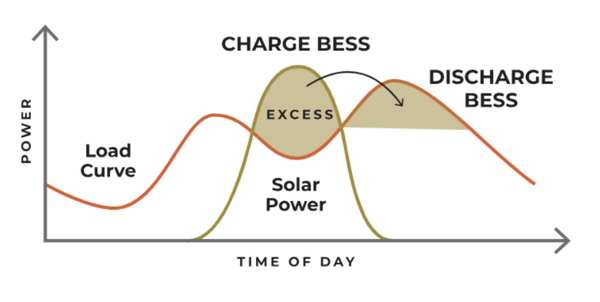
~에 Gycx 솔라, 우리는 지속적인 가치와 신뢰성을 제공하는 기술을 선택합니다. LFP의 능력 BESS 배터리 에너지 저장 장기간 요금을 청구하기 위해 설치하는 시스템은 그들이 큰 마음의 평화를 제공하는 주요 이유입니다.. Bess 기술에 대한 더 인기있는 주제를 살펴 보겠습니다.
배터리 에너지 저장의 장단점은 무엇입니까??
배터리 에너지 저장 시스템은 강력한 도구입니다, 그러나 모든 기술과 마찬가지로, 장단점이 있습니다. 균형 잡힌 이해는 정보에 입각 한 결정을 내리는 데 중요합니다..
메인 프로 Bess의 것입니다 에너지 독립, 중요한 비용 절감 전기 요금에 (특히 태양 광), 그리고 귀중합니다 백업 전원 그리드 정전 중. 메인 단점 입니다 높은 선불 투자, ㅏ 유한 수명 시간이 지남에 따라 점진적인 저하, 그리고 물리적 공간 설치에 필요합니다.
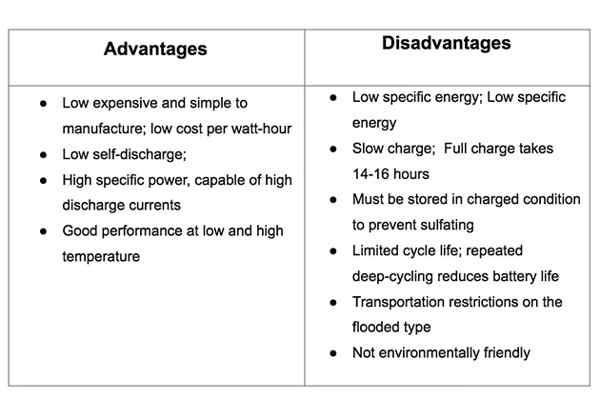
더 깊이 다이빙하십시오: 이점과 단점을 평가합니다
싱가포르에서 주택 소유자 또는 사업에 대한 장단점을 분류합시다.:
- 프로:
- 전기 요금 절약: 이것은 싱가포르의 거대한 운전자입니다. 낮에 생성 된 과도한 태양 에너지를 저장하고 밤에 사용하여, 그리드에서 구입 해야하는 값 비싼 전기의 양을 크게 줄입니다..
- 백업 전원 & 회복력: 싱가포르의 그리드는 매우 신뢰할 수 있습니다, 정전은 여전히 발생할 수 있습니다. Bess는 원활한 것을 제공합니다, 조명과 같은 필수 가전 제품을 유지하는 순간 전력, 냉장고, 인터넷, 그리고 에어컨 조정 - 정전 중에 탑승.
- 에너지 독립: 전원 공급 장치에 대한 통제력을 높이고 에너지 관세 또는 그리드 문제가 변동하여 영향을받지 않습니다..
- 환경적 이점: 자신의 깨끗한 태양 에너지 사용을 최대화합니다, 탄소 발자국을 더욱 줄입니다.
- 단점:
- 높은 선불 비용: Bess는 상당한 금융 투자입니다. 하드웨어 및 전문 설치에는 상당한 초기 지출이 필요합니다..
- 유한 수명: 배터리는 시간이 지남에 따라 저하됩니다. 현대적이지만 LFP1 베스는 오랫동안 지속됩니다 (10-20 연령), 평생 동안 일회성 구매가 아니며 결국 교체가 필요합니다..
- 공간 요구 사항: Bess는 전용이 필요합니다, 안전한, 설치를위한 잘 통풍이 잘되는 공간. 공간에 민감한 가정에서, 올바른 장소를 찾는 것은 계획 프로세스의 핵심 부분입니다.. 이것이 소형 벽 장착 및 랙 시스템이 인기있는 이유입니다..
- 왕복 효율 손실: 당신은 얻지 못합니다 100% 에너지가 뒤로 나옵니다. 작은 비율 (일반적으로 5-15% 최신 LFP 시스템의 경우) 충전/배출주기 동안 열로 손실됩니다.
Gycx Solar에서, 우리는 대부분의 고객에게 그것을 발견합니다, 장기적인 금융 저축과 백업 전력을 갖는 것은 초기 비용보다 훨씬 더 큰 마음의 평화.
베스 배터리의 수명은 얼마입니까??
Bess는 장기 자산입니다, 따라서 예상 수명을 이해하는 것은 전체 가치를 계산하는 데 중요합니다.. 시스템의 배터리에서 몇 년 동안 안정적인 서비스를 기대할 수있는 수년의 신뢰할 수있는 서비스?
현대적인 베스의 배터리 구성 요소, 일반적으로 사용합니다 LFP (리튬 철 포스페이트) 화학, 지구력을 위해 설계되었으며 수명이 예상됩니다. 10 에게 20 연령. 사용 측면에서, 이 배터리는 인상적으로 평가됩니다 3,000 오버 6,000 전체 전하 차지 사이클. 이 성능을 보장합니다, 평판이 좋은 제조업체는 a 10-연도 보증 표준으로.
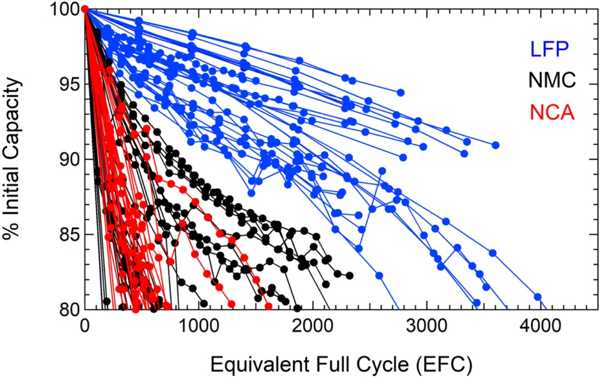
더 깊이 다이빙하십시오: 오래 지속되는 베스의 제작
현대 베스의 수명은 몇 가지 주요 요인의 결과입니다.:
- 우수한 LFP 화학: LFP는 다른 일반적인 리튬 이온 유형보다 화학적으로 더 안정적이고 강력합니다.. 수천 사이클 동안 태양 전지판 시스템에서 일일 사이클링의 응력을 견딜 수 있도록 만들어졌습니다.. 배터리가 하루에 한 번 순환됩니다 15 몇 년이 걸릴 것입니다 5,475 사이클 - 품질 LFP Bess는 쉽게 처리하도록 설계되었습니다..
- 지능형 배터리 관리 시스템 (비엠에스): BMS는 배터리의 보호자입니다. 그것은 세포가 안전한 한계 밖에서 작동되는 것을 방지합니다. (예를 들어, 과충전, 과방전) 그리고 세포의 균형을 유지합니다, 길고 건강한 삶에 필수적입니다.
- 적절한 열 관리: Bess 인클로저는 배터리를 시원하게 유지하도록 설계되었습니다.. 이것은 싱가포르의 연기적으로 뜨겁고 습한 기후에 특히 중요합니다.. 과열 방지는 배터리 수명을 최대화하는 데 가장 중요한 요소 중 하나입니다..
- 10 년 보증: 이것은 품질 주거용 Bess의 업계 표준입니다. 일반적으로 배터리가 원래 용량의 특정 비율을 유지할 것이라고 보장합니다. (예를 들어, 70%) 10 년 후, 장기 성과와 가치에 대한 확고한 기준을 제공.
사람들이 베스에 반대하는 이유는 무엇입니까??
Bess 기술은 엄청난 이점을 제공합니다, 때때로 우려 나 반대를들을 수도 있습니다, 특히 매우 큰, 그리드 규모 프로젝트. 이러한 우려는 무엇입니까?, 그리고 가정 또는 비즈니스 시스템에 어떻게 적용됩니까??
대규모 BESS 프로젝트에 대한 우려는 종종 발생합니다 토지 이용 붐비는 지역에서, 인식 화재 안전 위험 (종종 구형 배터리 화학에 대한 오래된 정보를 기반으로합니다), 그만큼 환경 영향 제조, 그리고 질문에 대한 질문 비용. 현대적으로 주목하는 것이 중요합니다, 전문적으로 설치된 주거용 및 상업용 LFP 시스템, 더 안전한 규모.
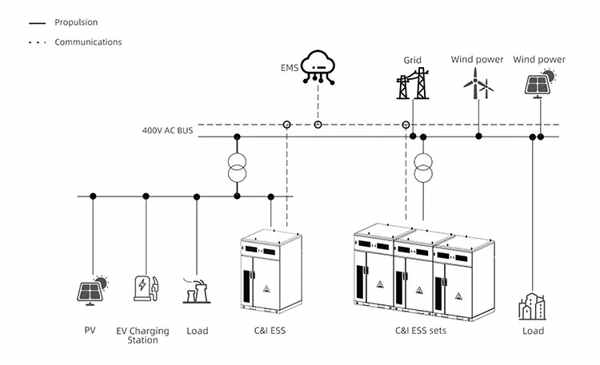
더 깊이 다이빙하십시오: 우려를 인정하고 해결합니다
문제와 현대 기술이 솔루션을 제공하는 방법을 살펴 보겠습니다.:
- 안전 두려움: 이것은 종종 가장 큰 대중의 관심사입니다. 리튬 이온 화재의 바이러스 성 비디오 (보통 작습니다, 더 휘발성 화학 물질이있는 소비자 전자 제품 손상) 두려움을 창조하십시오.
- 해결책: 우리는 독점적으로 사용하여 이것을 다룹니다 LFP 화학, 휴대 전화 나 노트북의 화학보다 훨씬 안전하고 열 런 어웨이가 덜. 뿐만 아니라, 모든 BESS 배터리 에너지 저장 우리가 설치하는 시스템은 인증 된 제품입니다 (예를 들어, 벌집입니다 9540 표준) 고급 BMS에서 여러 계층의 안전성이 있으며 라이센스 전문가가 설치합니다..
- 토지 이용 및 미학: 거대한 그리드 규모의 베스는 눈에 띄고 중요한 공간을 차지할 수 있습니다..
- 해결책: 주택과 사업을 위해, 솔루션은 작습니다, 미적으로 설계된 시스템. 현대의 벽에 장착 된 배터리 매끄럽다, 어플라이언스와 같은 모양, 그리고 랙 마운트 시스템 소형 캐비닛에 깔끔하게 수용 할 수 있습니다, 물리적, 시각적 발자국을 최소화합니다.
- 환경에 미치는 영향: 배터리 용 원료 채굴에는 환경 통행료가 있습니다..
- 해결책: 다시, LFP는 포함 된대로 더 나은 답변을 제공합니다 코발트 또는 니켈이 없습니다, 배터리 공급망에서 가장 문제가 많은 미네랄 두 가지. 성장하는 재활용 산업은 또한보다 지속 가능한 것을 만들기 위해 노력하고 있습니다., 모든 배터리 재료의 원형 경제.
- 비용: 사람들은 대형 그리드 프로젝트의 비용에 대해 걱정할 수 있습니다..
- 해결책: 소비자 수준에서, 선행 투자가 있지만, Bess는 전기 요금을 줄임으로써 가치를 창출합니다. 그리드 레벨에서, Bess는 종종 비싼 비용을 줄임으로써 전체 비용을 낮추는 경우가 많습니다., 오염 "Peaker" 발전소.
GYCX 태양 이야기: "고객과 대화 할 때, 우리는 안전을 해결합니다. 우리는 시스템의 LFP 기술이 온라인에서 볼 수있는 것과 근본적으로 다르고 안전한 이유를 설명합니다., 그리고 우리는 우리 제품의 다층 안전 인증을 통해 그들을 안내합니다.. 이 투명성은 자신감을 구축합니다."
Bess 배터리 에너지 저장 비용은 얼마입니까??
Bess를 고려하고 있다면, 투자를 이해하는 것이 중요한 단계입니다. 싱가포르 주거 시스템의 일반적인 비용은 얼마입니까??
a의 총 설치 비용 BESS 배터리 에너지 저장 집을위한 시스템은 대략 범위에서 다양 할 수 있습니다 S $ 15,000 ~ S $ 50,000 이상, 시스템 크기에 따라. 최종 가격은 배터리에 의해 결정됩니다 용량 (kWh), 그것은 전력 등급 (kW), 구성 요소의 브랜드와 품질, 설치의 복잡성. 단위별로, 비용은 종종간에 있습니다 S $ 800 및 kWh 당 $ 1,500 완전히 설치된 LFP 시스템 용.
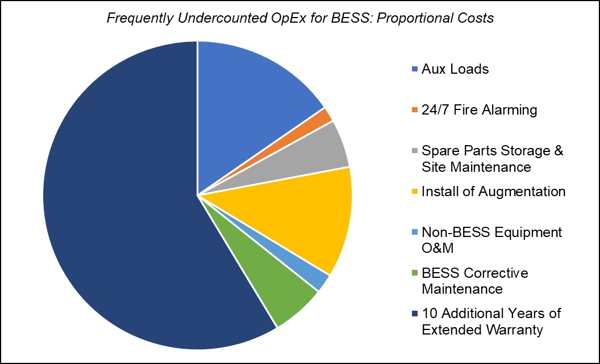
더 깊이 다이빙하십시오: 가격에 포함 된 것?
Bess의 비용은 배터리 자체 이상입니다.. 전체 시스템입니다, 그리고 가격에는 포함됩니다:
- 배터리 모듈: 핵심 에너지 저장 구성 요소. 더 많은 KWH는 더 높은 비용을 의미합니다.
- 하이브리드 인버터 (PC): 에너지 흐름을 관리하는 시스템의 강력한 두뇌.
- BMS 및 소프트웨어: 시스템을 안전하고 최적화하는 통합 인텔리전스.
- 시스템의 균형 (bos): 물리적 인클로저 (예를 들어, 벽 마운트 장치 또는 랙 캐비닛), 배선, 안전 분리, 그리고 다른 하드웨어.
- 전문 설치: 인증 된 기술자 및 면허가있는 전기 근로자의 노동 및 전문 지식 (루) 금고를 보장합니다, 코드 호환 설치.
- 가치: 이 비용을 장기 혜택으로 평가하는 것이 중요합니다.. 싱가포르에서, 전기 관세가 높을 수있는 곳, 야간 사용을 위해 자신의 태양 에너지를 저장하면 시스템의 비용이 크게 줄어 듭니다. 10-20 연도 수명. 백업 전원의 귀중한 보안을 추가하십시오, 그리고 투자 사례는 매우 강력 해집니다.
Gycx Solar에서, 우리는 명확하게 제공합니다, 항목 별 제안서에 대해 정확히 알 수 있습니다.. 우리는 고객에게 최상의 장기 가치를 제공하는 시스템 설계에 중점을 둡니다..
베스는 강력합니다, 현대 에너지 관리의 핵심 인 지능형 시스템. 그것은 놀라운 효율성으로 에너지를 보유하고 있습니다, 길고 신뢰할 수있는 수명이 있습니다, 여러 층의 안전성으로 설계됩니다. 엄청난 이점과 실제 고려 사항을 모두 이해함으로써, 자신감있는 선택을 할 수 있습니다.
방법을 탐색 할 준비가된다면 BESS 배터리 에너지 저장 시스템은 주택 또는 비즈니스에 에너지 안보 및 금융 저축을 제공 할 수 있습니다., GYCX Solar의 전문가 팀이 당신을 안내하기 위해 여기에 있습니다.. 오늘 전문 상담을 받으려면 저희에게 연락하십시오!
LFP의 개념을 이해하면 배터리 관련 데이터 개념을 더 잘 비교하고 이해하는 데 도움이됩니다.. ↩
